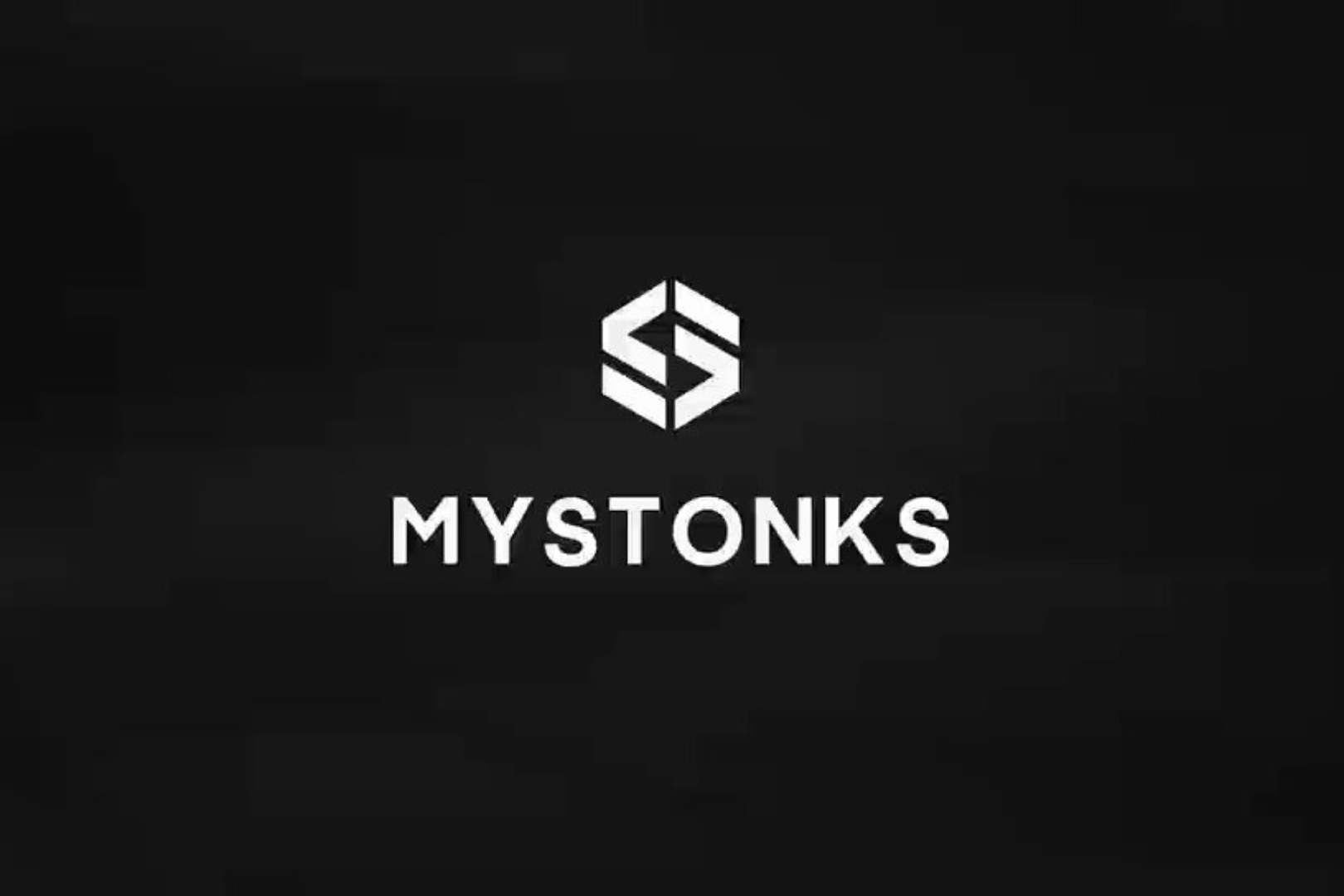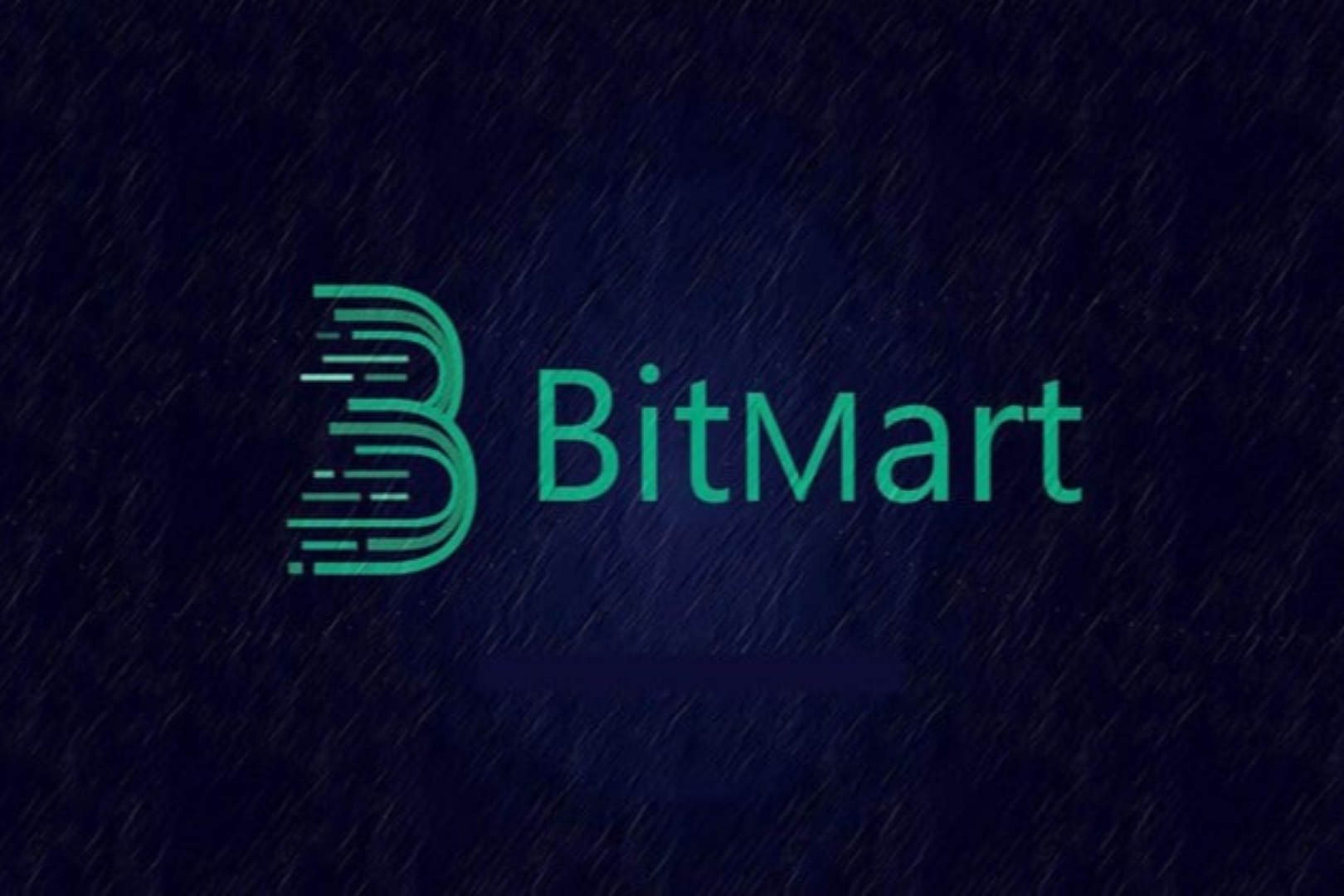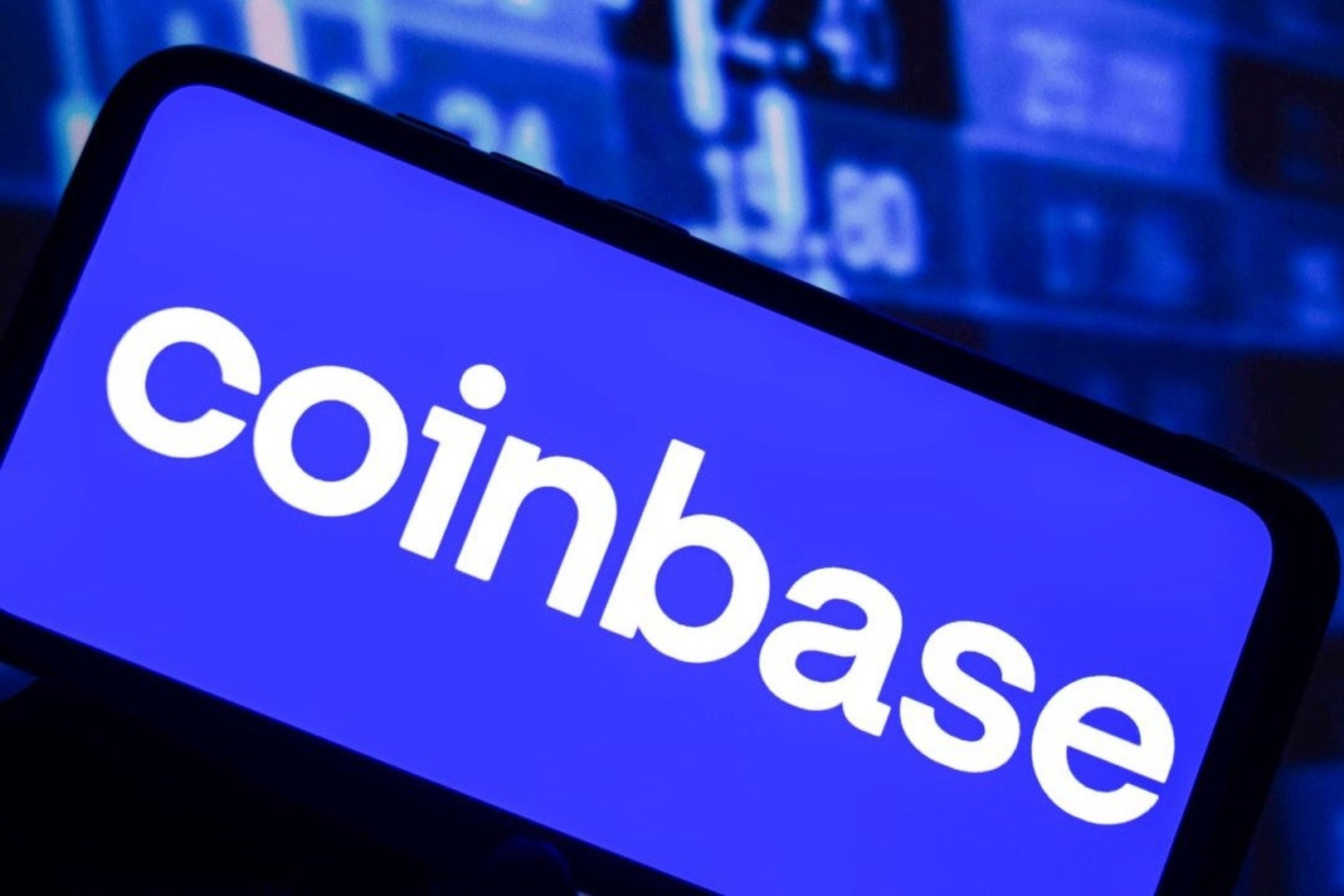overview
overview
Two months after ChatGPT was launched, the number of users quickly exceeded 100 million, becoming a hot spot in the industry and the capital market. At present, many technology giants at home and abroad have deployed in the AIGC field. Domestic companies such as BAT, Byte, and Netease, as well as foreign companies such as Google, Meta, and Microsoft, have all launched AIGC application products. Entrepreneurs in the encryption industry are also actively exploring the combination with ChatGPT and AI, trying to get a share of the pie.
We think AIGC will be a productivity tool in the Web3 era.As we enter the era of Web 3.0, artificial intelligence, linked data, and the construction of semantic networks form a new link between people and the Internet, and the demand for content consumption grows rapidly. Content generation methods such as UGC\PGC will be difficult to meet the needs of expansion. AIGC will be the new metaverse content generation solution. The generation of AIGC uses artificial intelligence to learn knowledge graphs, automatically generate them, and provide assistance to humans in the creation of content or generate content entirely by AI. It can not only help improve the efficiency of content generation, but also improve the diversity of content.
In general, AIGC can be divided into three dimensions: the software level includes natural language processing technology, AIGC generation algorithm models and data sets; the hardware level mainly includes computing power and communication networks; the commercial application level includes various consumer-grade web2/web3 applications, this article will focus on potential innovations for consumer applications.
1. AIGC software layer—a wave of innovation triggered by technological advancement
AIGC technology mainly involves two aspects: natural language processing NLP and AIGC generation algorithm.
natural language processing
Natural language processing is a means to realize the interaction between humans and computers through natural language. Recurrent Neural Networks (RNNs) are at the heart of current major approaches to NLP. Among them, the Transformer model developed by Google in 2017 has gradually replaced RNN models such as long short-term memory (LSTM) as the preferred model for NLP problems. The parallelization advantage of Transformer allows it to be trained on larger datasets. This also contributed to the development of pre-training models such as BERT and GPT. These systems are trained using large corpora such as Wikipedia, Common Crawl, etc., and can be fine-tuned for specific tasks.
AIGC generation algorithm
secondary title
1.1 Generative Adversarial Networks GAN (Generative Adversarial Networks)
secondary title
1.2 Diffusion Model Diffusion Model
Diffusion models are a new class of generative models that generate a variety of high-resolution images. They have attracted a lot of attention after OpenAI, Nvidia and Google managed to train large models. Diffusion Model The generation logic of the Diffusion Model is closer to the human thinking mode than other models, which is why AIGC has an open creativity recently. Essentially, Diffusion models work by corrupting the training data by continuously adding Gaussian noise, and then learning to restore the data by reversing this noise process. It has higher precision, scalability and parallelism, both in terms of quality and efficiency, and its rapid development has become an inflection point factor for the growth of AIGC. At the same time, in the process of machine learning, a large amount of training is required to achieve more accurate results, and the demand for underlying computing power will increase rapidly.
2. Hardware layer—the rise of distributed computing power narrative
Compared with the traditional algorithm, the artificial intelligence algorithm has no redundant assumptions, but completely uses the input data to simulate and build the corresponding model structure. This algorithm characteristic determines that it is more flexible and can be based on different training data. The ability to self-optimize also brings a significant increase in the amount of computation. With the increase of AIGC generation, especially the addition of future video, games and other content, the demand for computing power will increase sharply, and GPU dedicated computing clusters may emerge as the times require, which is crucial to improving model accuracy and user experience. According to OpenAI analysis, since 2012, the demand for AI computing power has increased by about 300,000 times in the six years:
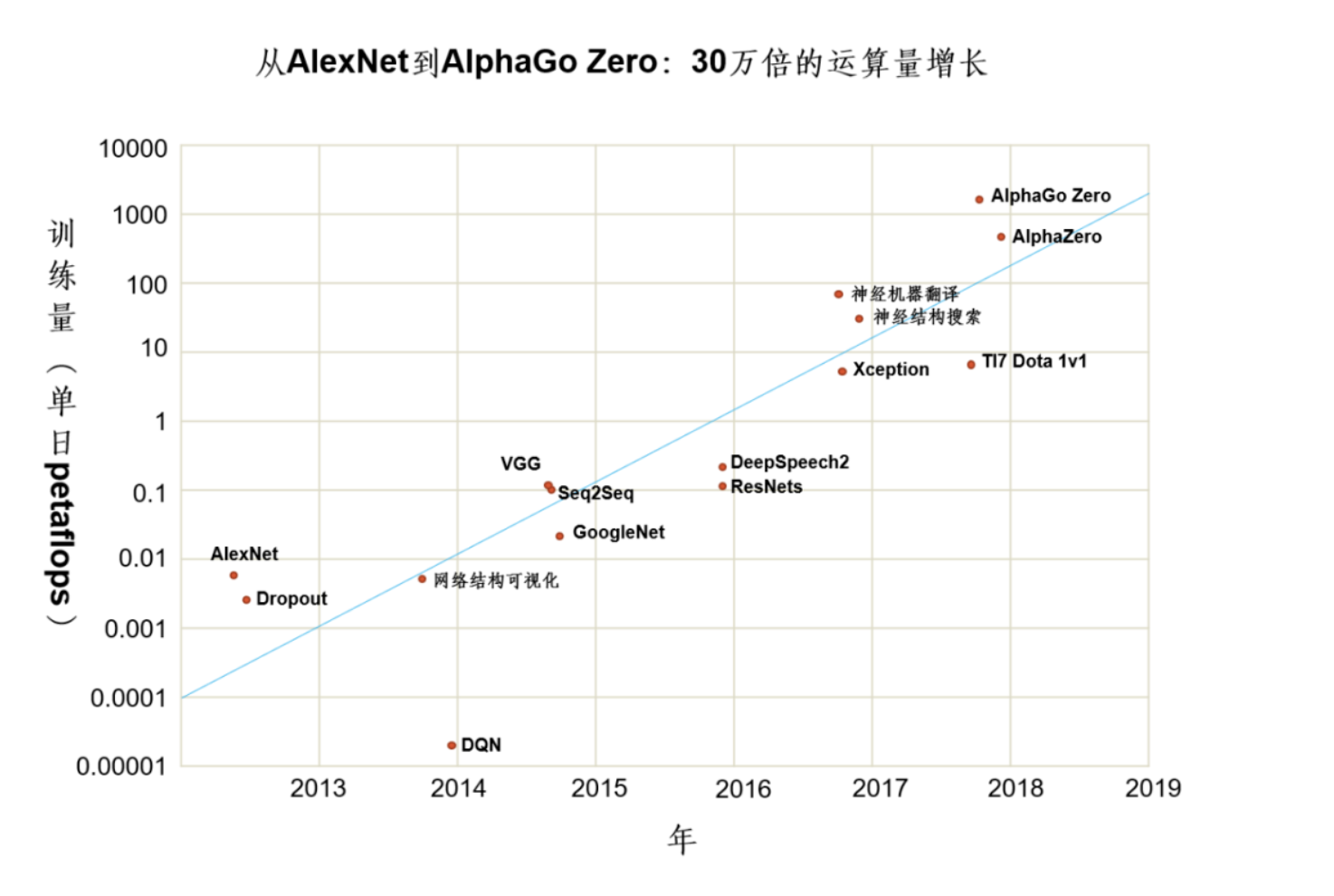
Web3 technology can improve the efficiency of machine learning through decentralization, which has been applied in traditional AI training. For example, KataGo, an improved version of AlphaGo, uses distributed training technology, so that people around the world who want this AI update voluntarily Provide computing power training.
Render Network is a provider of distributed rendering services based on GPU infrastructure. It solves the problem that traditional local rendering and cloud rendering cannot effectively utilize global GPU computing power. Render Network can be regarded as middleware, connecting the supply side and the demand side. Users publish rendering tasks through the blockchain, and miners can take orders to render for you, and the transaction fees during this period are settled by RNDR.
The core of Phala Network is the cloud computing network, which adopts the mode of "consensus on the chain, computing off the chain". For AI's heavy computing tasks, Phala can also provide it with a steady stream of computing services. Building on the Secure Enclave trusted execution environment means that even malicious nodes cannot steal AI data or manipulate the execution of its automated programs to provide false results.
The wider application in web3 can be similar to Gitcoin, donating computing power can get POAP, or similar to AMM, which provides incentives for liquidity and becomes a platform for renting computing power for a fee.
3. Commercial application layer—when AIGC is integrated into Web3 consumption scenarios
From the perspective of commercial applications, AIGC's business models in text, image, audio, games and code generation are gradually becoming more and more mature, especially in some fields with highly repetitive tasks and low precision requirements. AIGC services are generally realized in the form of SaaS services in Web2 (such as Lensa, ChatGPT pro)
Compared with Stability AI, ChatGPT and other artificial intelligence that have gained a lot of attention and adoption in traditional fields, the greater imagination of blockchain lies in the economic system that can change the AI model. Some time ago, there were many AI concept coins that led the rise sharply, but we are more concerned about what directional innovations AIGC+Web3 can produce at the application layer after the FOMO sentiment fades.
3.1 AIGC & Mass adoption
Many traditional web2 users are interested in crypto, but often give up because of complicated and unfamiliar operations. The emergence of AIGC is expected to significantly lower the entry barrier for web2 users.
a) Web3 search engine: Web3 version chatgpt. On the basis of the existing chatgpt large model, add on-chain data and data sources such as twitter, reddit, Lens, Farcaster, Mastodon, and encrypted media for training to build a crypto encyclopedia.
Existing use case: RSS3
RSS3 productsHoot.itOn the basis of ChatGPT, more content training on open networks such as Web3 has been added and optimized, so that users can get a better experience when searching for content.
Existing use cases: Kaito
b) Kaito, an AI-powered encrypted search engine whose data and information are often scattered across multiple sources such as Discord, Medium, Mirror, podcast transcripts, and news and research platforms. Kaito brings this information together in one place through its AI-powered search engine.
Personalized onboarding experience: By analyzing user behavior and preferences, AI can create a personalized onboarding experience based on each user's risk appetite and past investment experience. Compared with the text version of the tutorial, the AIGC engine can provide one-on-one guidance in every step of wallet creation, login, transaction, and smart contract interaction, reducing the complexity of onboarding and user churn rate, making new users more at ease.
c) Investment account opening guidance: AI smart assistant can provide users with the latest market data, heat tracking and basic investment advice. The AI assistant can analyze the top ten hottest NFT/altcoins in the market for novice users, generate detailed data charts, and assist users to complete operations such as account opening and purchase on major trading platforms.
Comment: This type of product is mainly for retail traders. The overall traffic is large and the basic knowledge is lacking. It is necessary to ensure the strong security and authority of the product. It is very likely that the centralized exchange will start it first. In addition, web3 structured data is scarce and of low quality, and the market update iteration speed is very fast. There are many challenges in data acquisition. At present, most projects have not yet started testing, and the product experience is not clear.
3.2 AIGC & Games
a) Enhanced immersion: AIGC-driven game characters can provide players with a more realistic experience. AI-driven NPCs (non-player characters) can generate more complex, realistic behaviors, enhance game interactivity, and respond to users' actions and decisions in real time based on their actions.
Existing use cases: Red Dead Redemption, map generation, etc.

"Red Dead Redemption 2" has a wealth of interaction options between players and NPCs - greetings, buying and selling, annoying, drawing guns, robbing, starting missions, asking secrets, etc., which change according to the interactive objects. With blessing, a richer/more realistic interactive experience can be formed.

All of Microsoft Flight Simulator's 197 million square mile environments are created primarily through artificial intelligence, Microsoft andblackshark.aiCollaborate to generate infinitely realistic 3D worlds from 2D satellite imagery with AI.
b) Lower the threshold for game creation: Creators can create games with a lower threshold. Although most of the open world UCG game editors have simplified the steps of game creation, creators still need a certain programming foundation. In AIGC With the help of code-free programming, it will become possible for players to generate specific game assets, style scenes, gameplay, etc. through text descriptions or pictures.
Existing use cases: Lifeform AI
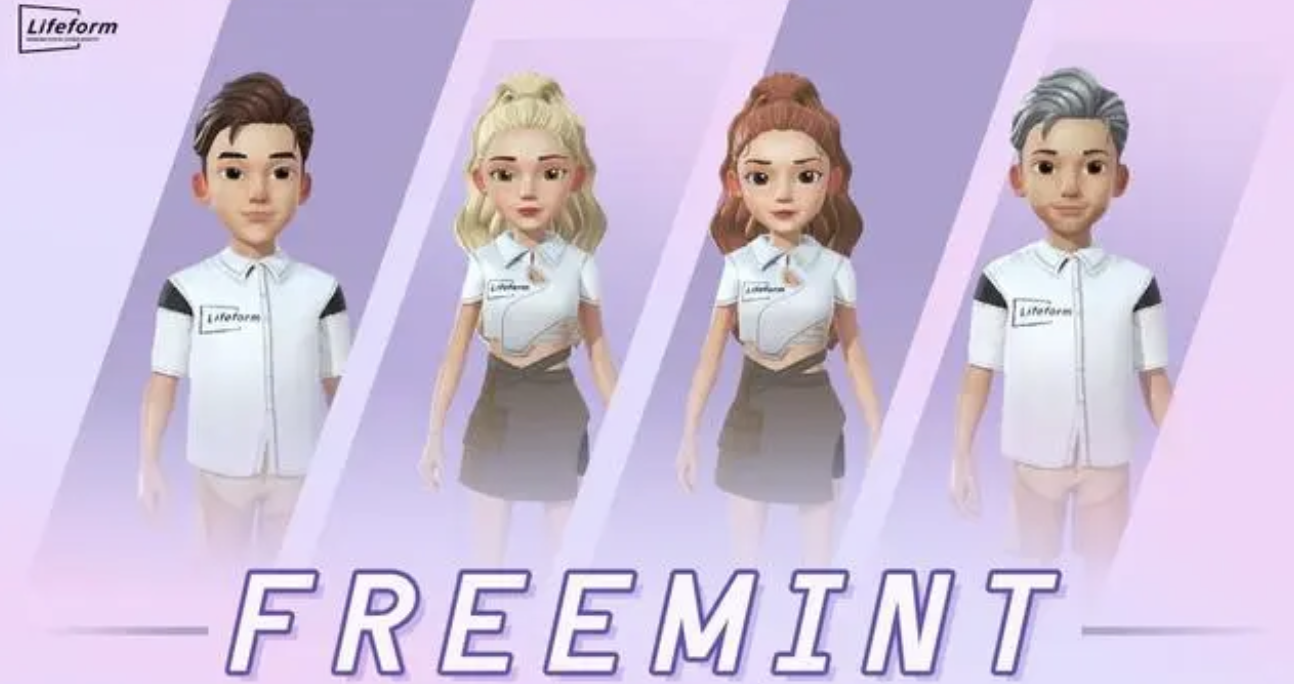
Lifeform users can generate their own cartoon characters through AI tools. Lifeform AI Cartoon is running a month-long freemint campaign from February 17th to March 17th. Players pay about USD 0.5 for free minting, and each wallet is limited to one. As of February 25, 207,000 NFTs have been minted on BNBChain, and a total of 133,000 wallet addresses hold AVATAR NFTs.
Existing use case: Anything World
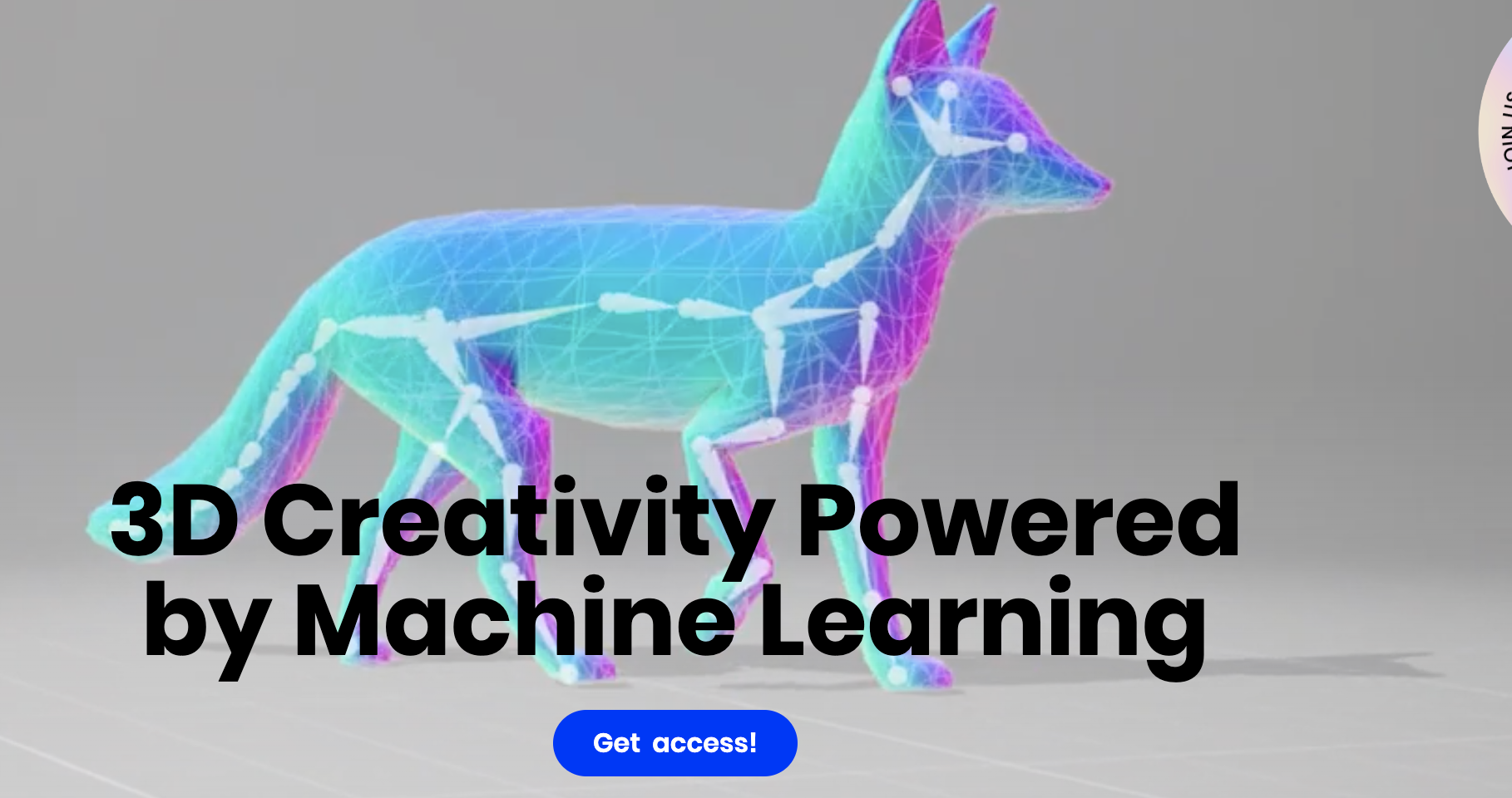
Anything world Metaverse AI animation tool development company will land on the Epic Games virtual engine in December this year. Anything World mainly builds ML-driven large-scale creation of open source, usable and blendable 3D tools, lowering the threshold for people to enter the Web3 world.
Existing use case: AIRENA
AIRENA is a fast interactive channel between the real world and Metaverse. It is committed to using advanced 3D AIGC functions, Metaverse, and space UGC systems to build a one-stop art and entertainment social platform for real 2D/3D art creators. AIRENA's simplified full-format NFT creation process and creation functions in UGC space will make AIRENA a comprehensive solution for individuals, artists, and companies to participate, integrate, and build parallel worlds, providing a seamless experience for META to explore and trade digital assets.
c) Personalized gaming experience: AIGC can help personalize the player's gaming experience. By tracking player behavior and preferences, AI algorithms can provide tailored recommendations and game options, increasing player satisfaction and retention.
Existing use case: Mirror World
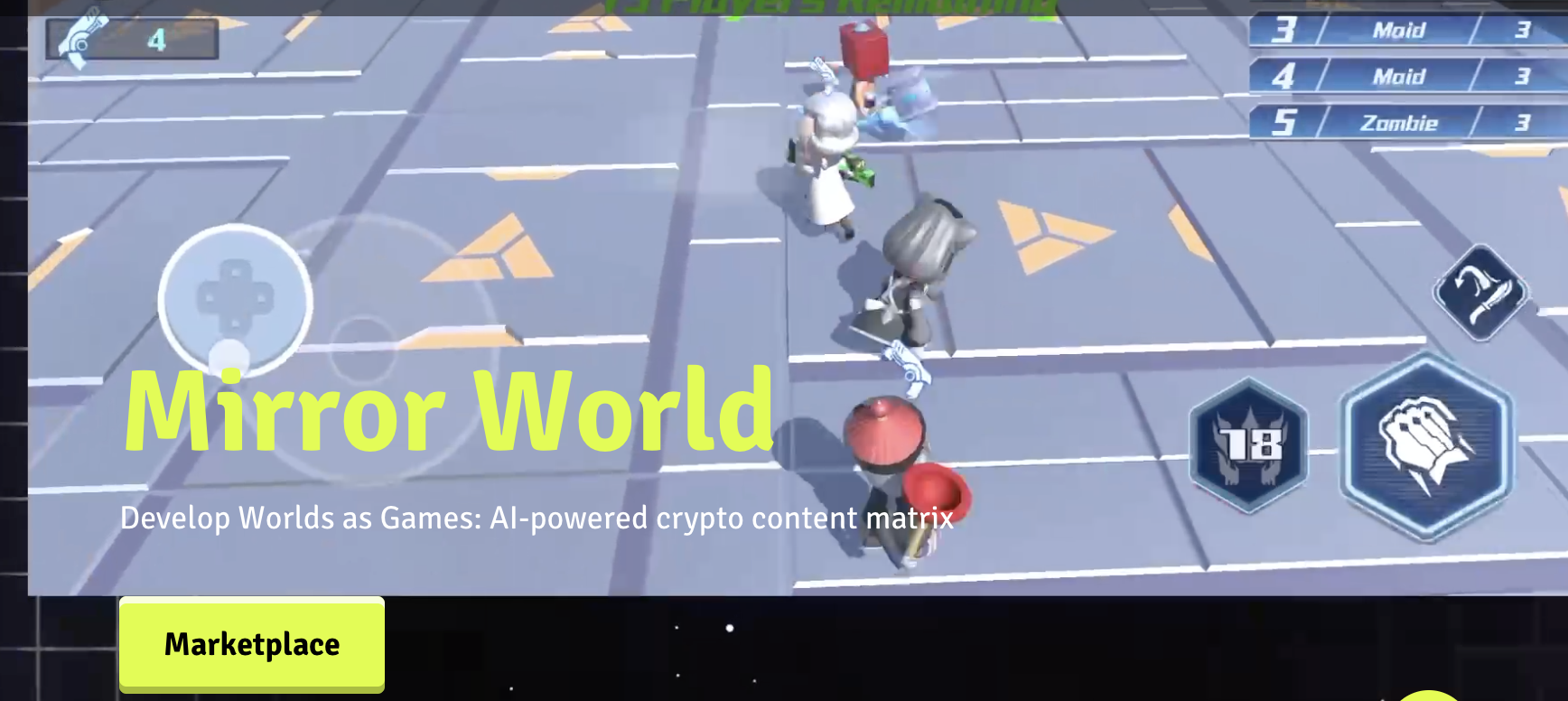
Mirror World, an AI-driven chain game project, has launched an interactive NFT Mirror NFT in September 2021, which can circulate games across the entire Mirror World platform, and is expected to launch three games with interoperable assets this year.
d) Fairness and anti-cheat: AI-powered anti-cheat systems can detect unusual behavioral patterns, such as self-aim or see-through, and then flag them for further investigation. In addition, an AI-driven Random Number Generator (RNG) can improve the fairness of on-chain spinach games.
e) Dynamic Game Balance: AI can be used to optimize game balance, adjusting difficulty levels and challenges in real time based on player behavior and skill level. The game will be more interesting and challenging, and at the same time players will not be frustrated by overly difficult levels.
Existing use case: RCT AI
RCT AI has developed an AI-trained DRL (Deep Reinforcement Learning) model for Axie Infinity. Since there are about 10 ^ 23 combinations of all cards in Axie Infinity, as well as the characteristics of the game, the model of rct AI is simulating a large number of Increased efficiency and win rate in battle statistics.
Comment: The main use case of AIGC in the game field is for infrastructure optimization.It is more difficult to become an independent business model.
3.3 AIGC & Decentralized Social
a) Content creation: AIGC can bring a new way of content creation, using the ability of AI to generate content to allow ordinary crypto users to join the creation process. Users do not have to contribute specific creative content, but can contribute ideas or fine-tune models.
b) Reduce social pressure: AIGC can help users summarize complex information flows, allowing users to quickly read key information and reduce reading pressure; Handle social messages and make simple decisions.
c) DID and achievement system: Use AIGC to create a digital identity or generate a personal achievement wall.
Existing Use Cases: AspectaAI
Based on cloud and on-chain data, Aspecta applies AI to create digital identities with deep value. Starting from developers, revolutionize the potential of user data. With Aspecta ID as the core, Aspecta has established the Aspecta Identity Ecosystem to provide users and third-party applications with secure and controllable cross-Web2 & Web3 data storage, transmission and intelligent application services through protocols and systems.
Potential Use Case: AIGC Achievement Wall
Another potential use case is to generate an art wall based on user interactions on the chain, asset status, and nft positions. It is not simply displayed, but a variety of elements are integrated into one, and various rich art forms such as 3D gallery, abstraction, oil painting, graffiti, etc. are randomly applied to express them, and the artistic style and elements will also be recorded along with the interaction Dynamic changes.
Comment: How do we measure the value of user-generated versus ai-generated content? How to measure the value of human and machine art?The author believes that the AIGC model is learned and summarized in the existing data corpus, and it is difficult to exceed the average level of the Internet. In the era of AIGC, real creators should think about real innovation, and then promote the progress of civilization, instead of summarizing mediocre ideas.
3.4 AIGC & NFT
a) Generative NFT: The AIGC algorithm can learn from the preferences and feedback of individual collectors. As more and more AI creation tools are opened to ordinary users, NFT art creation becomes as simple as "you draw and I guess" game.
Existing use cases: Eponym, Metascapes
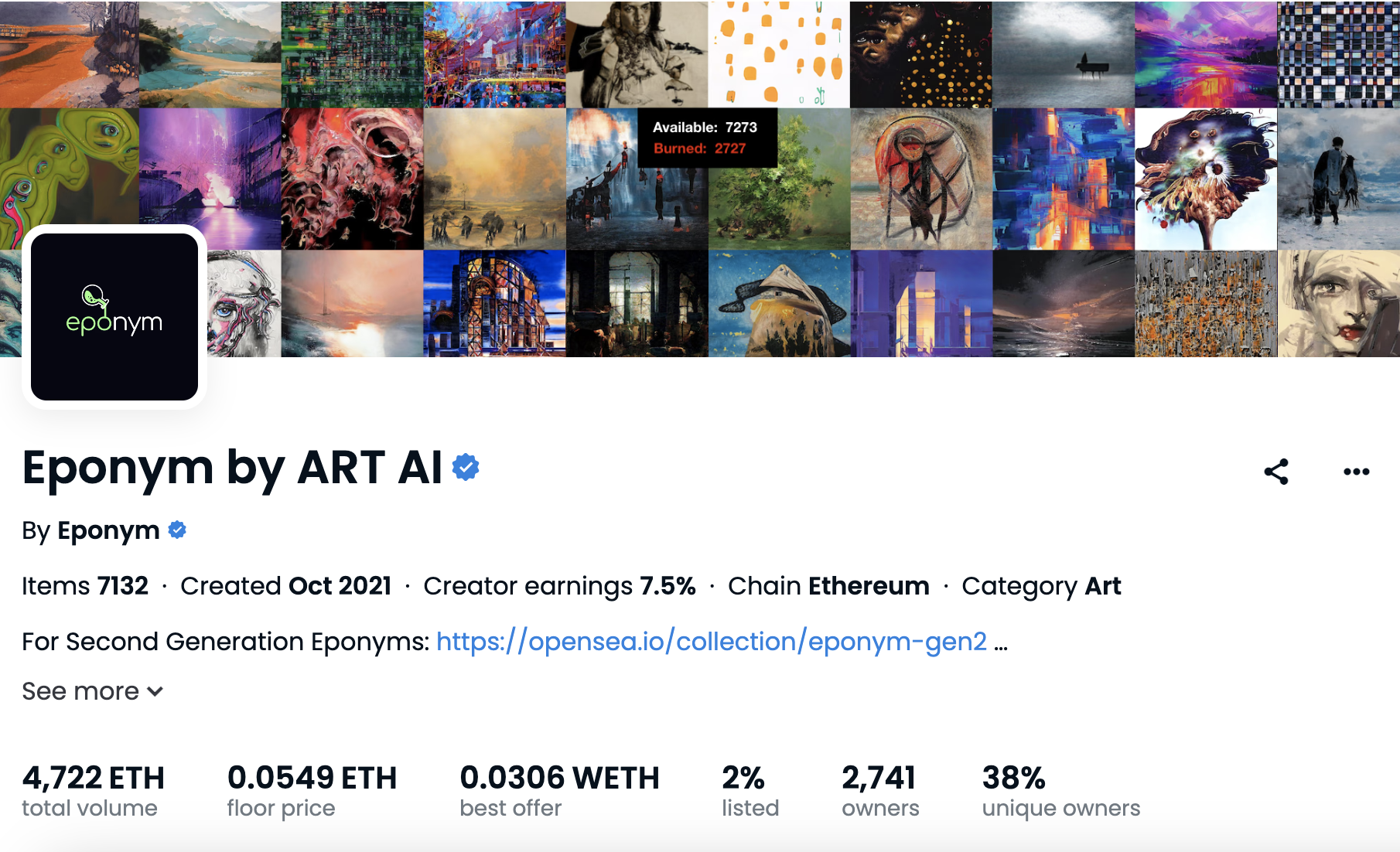
Eponym is an AI algorithm developed by Art AI that can generate works of art based on words or phrases. It can generate abstract works of art within one minute, cast them into NFTs, and engrave them on Ethereum. The first product on OpenSea was sold out in a few hours, and 4722 NFT transactions have been completed so far, with a total transaction volume of 4722 ETH.
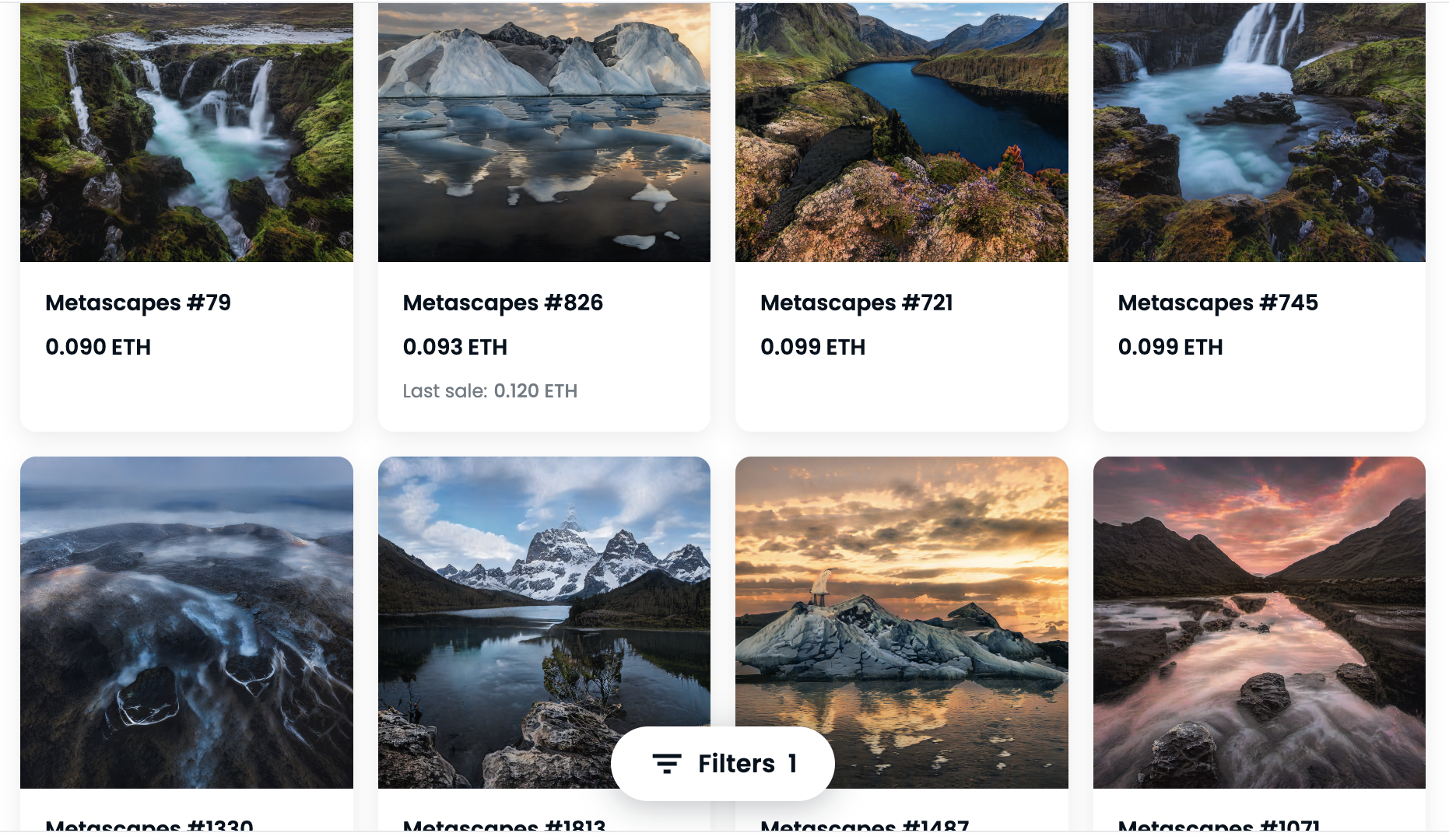
The original material of Metascapes comes from taking photos from the most fantastic locations in the world. AI has learned to generate these NFTs, and the current transaction volume on OpenSea has reached 315 ETH.
b) Interactive NFT: NFT itself can interact and grow according to user behavior, such as attribute evolution, parent NFT merger, NFT game competition, etc. The specific items are as follows:
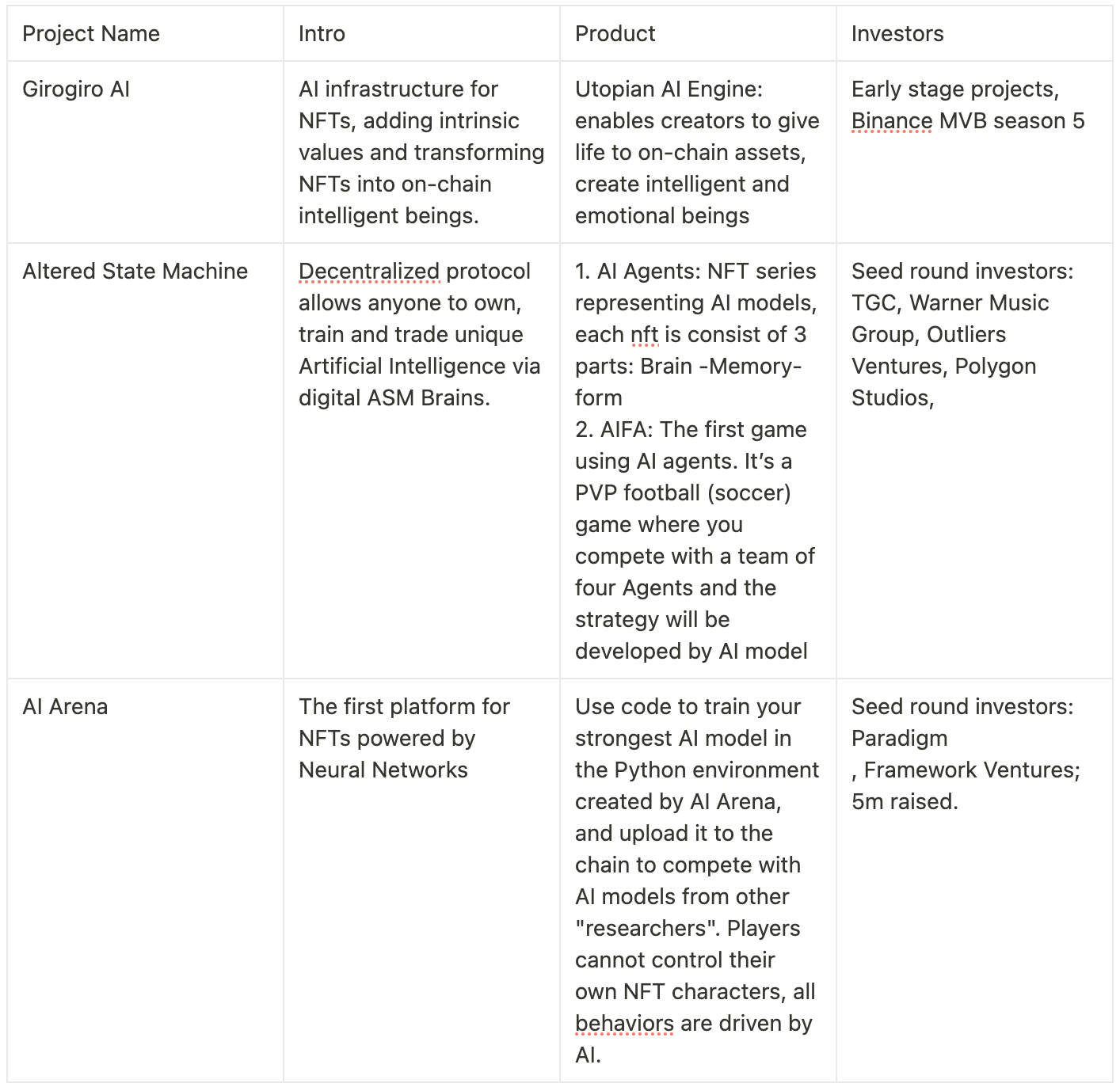
Comment:Will AIGC affect the scarcity of NFT, and can it be recognized by the community?The author believes that it should be analyzed by scene: mid- and long-tail NFT can be generated by aigc, with high production efficiency, innovative concept, and exquisite painting style; blue chips prefer human artists. This difference is similar to the era of the industrial revolutionThe difference between industrial products and handmade products——Before the industrial revolution, ordinary people lacked basic daily necessities. The appearance of industrial products met the daily needs of the people, and handmade products became a symbol of noble quality; it can be seen inIn the era of aigc, the value of human artists will become higher, but the audience will be smaller and more high-end.
3.5 AIGC & DeFi
a) Intelligent trading algorithm: AI trading algorithm can be used to analyze market trends, more accurately predict the direction of asset prices, and help traders make more informed investment decisions
Existing use case: Sumo Signals
Sumo SignalsAI encryption trading strategy platform can provide artificial intelligence-based arbitrage trading indicators, screen hundreds of cryptocurrencies, and look for patterns that indicate buying or selling signals to help crypto traders execute arbitrage transactions.
b) More efficient lending agreement: By using AI algorithms, the lending platform can automatically assess the credit value of the borrower and set an appropriate interest rate to reduce the risk of default, making the lending process more efficient.
first level title
Foresight Ventures bets on the innovation of cryptocurrency in the next few decades. It manages multiple funds: VC fund, secondary active management fund, multi-strategy FOF, special purpose S fund "Foresight Secondary Fund l", with a total asset management scale of more than 4 One hundred million U.S. dollars. Foresight Ventures adheres to the concept of "Unique, Independent, Aggressive, Long-term" and provides extensive support for projects through strong ecological forces. Its team comes from senior personnel from top financial and technology companies including Sequoia China, CICC, Google, Bitmain, etc.
Foresight Ventures bets on the innovation of cryptocurrency in the next few decades. It manages multiple funds: VC fund, secondary active management fund, multi-strategy FOF, special purpose S fund "Foresight Secondary Fund l", with a total asset management scale of more than 4 One hundred million U.S. dollars. Foresight Ventures adheres to the concept of "Unique, Independent, Aggressive, Long-term" and provides extensive support for projects through strong ecological forces. Its team comes from senior personnel from top financial and technology companies including Sequoia China, CICC, Google, Bitmain, etc.
Website: https://www.foresightventures.com/
Twitter: https://twitter.com/ForesightVen
